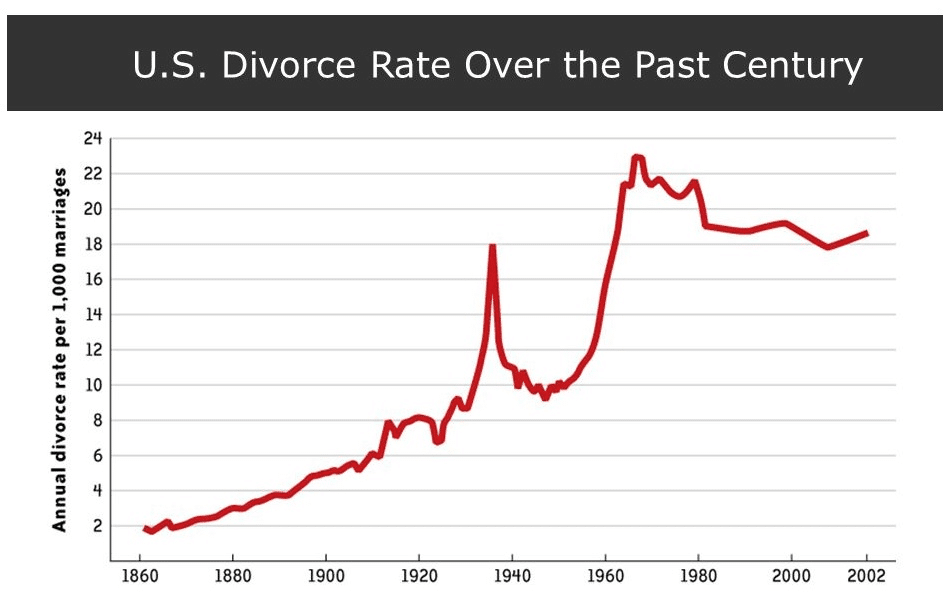Divorce is an already emotionally taxing event that financial worries can exacerbate. As retirement accounts are a source of cash flow for couples in their later years, fair and tax-advantaged splitting of these accounts is the major problem faced by spouses.
How the division of assets will occur varies considerably depending on where you live. For example, in the nine community property states — Arizona, California, Idaho, Louisiana, Nevada, New Mexico, Texas, Washington, and Wisconsin — all earnings and everything acquired with those earnings during the marriage is generally divided 50/50.
On the other hand, division of marital assets occurs “equitably” in common law states, a standard that gives courts considerable discretion in deciding what’s fair.
Read this article to understand what happens with your account in a case of divorce.
What should I know before starting?
- The most tax-advantaged method of funds distribution in the case of divorce is to roll over the amount to the non-participant spouse’s individual retirement account (IRA).
- With QDRO implementation by 401(k) plan administrators, the alternate payee can receive some amount of liquid funds directly without paying a 10% penalty, even if not of 59 ½ age.
- QDRO is not applicable in IRAs, and separate terms have to be documented by your lawyer or CPA.
What is a 401k account?
401(k) is an employer-sponsored retirement account in which you contribute according to your defined plan. In addition to the provision of tax benefits, retirement accounts “compound” your deposited income
It is essential to know that these retirement plans only provide a “tax break.” You have to pay taxes either when depositing installments or withdrawing distributions.
Contributors deposit their monthly investments in the traditional 401(k) account with pre-tax money. As a result, they are not liable for upfront tax payments on the amount they deposited to a traditional 401(k). In addition, in most cases, employers contribute a percentage of the amount to your 401(k) according to your installment worth.
On the other hand, you submit post-tax dollars in a Roth 401(k) and owe no tax at the time of distributions. In both cases, your money is tax shielded as long it remains and grows in the retirement account.

The options for retirement accounts division after a divorce
In most cases, retirement accounts are the biggest assets of an aging couple. However, you can face enormous losses if you do not handle the division of possessions through proper legal ways. We have discussed some of the options below for dealing with your retirement funds in case of a divorce.
1. Leave the funds in the participant’s 401k
If you or your spouse owns a 401(k) account and decides on its division in the divorce process, a Qualified Domestic Relations Order (QDRO) is compulsory for handling the proceedings. This court decree allows the soon-to-be ex-spouse to receive a portion or all of your retirement account savings.
You may face unexpected tax consequences and loss of all benefits if you proceed without a QDRO in action. Therefore, you should obtain the help of an expert attorney for drafting the terms. It is an essential document with legal language that stipulates the agreement according to state laws, specific plan guides, and marital property rights.
You must wait for the plan administrator and court to accept the QDRO before advancing to the next step. The least complicated way of dividing the assets is a 50/50 division or equitable 401(k) distribution. If the non-participant spouse does not have an immediate need for liquid cash, they can decide to leave their portion into the primary owner’s 401(k) account.
Furthermore, it is prudent to leave the funds into the account until retirement age if you have divorced before 59 ½ years. Then, funds will get equally distributed with similar tax clauses to both parties at the specified time of distribution.
2. Direct rollover to non-participant spouse’s individual IRA
To avoid unnecessary delays and issues, you should indicate the mutually agreed asset division choice in the QDRO document. The non-participant spouse can also opt for a direct rollover to their individual IRA.
This legal rolling over is designated as trustee-to-trustee transfer and involves no tax deductions and penalties. In addition, the former spouse can exercise authority over their funds in an individual retirement account.
Tax deductions and penalties come into the picture when the plan administrators do not execute the rollover process and, instead, the alternate payee receives funds for rollover.
Firstly, the IRS will incur a 20% withholding tax on the transfer amount. Secondly, suppose the other party does not roll over the amount to the IRA within 60 days. In that case, government authorities will declare that as a taxable income and impose a 10% penalty if the non-participant spouse is under 59 ½ age.
In addition, even if the former spouse receives direct rollover in an IRA but withdraws early before the specific age, their withdrawal will be considered an early distribution. It will get penalized according to the standard rules.

3. Cash-out
Some ex-spouses decide to receive the funds as cash instead of storing them in an IRA or former spouse’s 401(k). Though professionals recommend not to touch the retirement savings before the later years, immediate cash needs can lead to the adoption of this option.
You should know that tax authorities will levy 20% federal withholding tax and income tax on the cashed-out funds in all cases. Furthermore,10% additional tax/penalty will be imposed on these withdrawn funds if you are under 59 ½ age.
It is essential to be clear and intelligible in the QDRO regarding the choice of this division method.
4. Take a lump-sum distribution prior to rollover
In this case, the non-participant party takes a specified percentage or share of the total funds as a lump sum. This transfer is beneficial for their regular cash needs if they have no other substantial income source.
International Revenue Service (IRS) will impose federal withholding tax or other applicable taxes on the requested early distribution amount. However, the receiver will be exempted from the 10% penalty even under 59 ½ years of age. In addition, this option is suitable for individuals who also want to gain retirement account benefits from a portion of their funds.
The account owner should stipulate clear agreement terms in the QDRO to ensure that the benefit receiving spouse endures the tax consequences.
Upsides and downsides
| Upsides | Downsides |
| Tax-free rollover Funds can be rolled from 401(k) to IRA without tax deductions or penalties through a QDRO. | Delays in processing Vague or unsuitable terms in the QDRO or other divorce decree can result in excessive months or even years delays in the asset division process. |
| No penalty in early withdrawal of a portion The non-participant spouse can receive a portion of 401(k) funds in liquid form without penalty, even if not of retirement age. | Loss of potential growth of funds If the alternate payee cash out funds from the 401(k), they lose the benefit of funds growth and potential future value. |
Benefit for both parties in late withdrawal If both participants decide to save funds in the retirement account, they can benefit from the compounded amount within that period. | Loss of substantial amount by divisions Federal withholding tax or other deductions by splitting of assets considerably reduce the funds. |
Final thoughts
Individuals invest in retirement accounts throughout their life to enjoy the benefits in later life. However, an improperly handled divorce agreement can result in the loss of all monetary advantages. Unfortunately, most couples possess no proper knowledge regarding the QDRO and implications of early cashouts.
Therefore, besides gaining a lawyer’s or CPA’s expertise for all proceedings, it is essential to review the settlement terms and tax consequences by yourself also. In this way, you can reduce the excruciating burden of divorce by efficiently handling financial matters.




